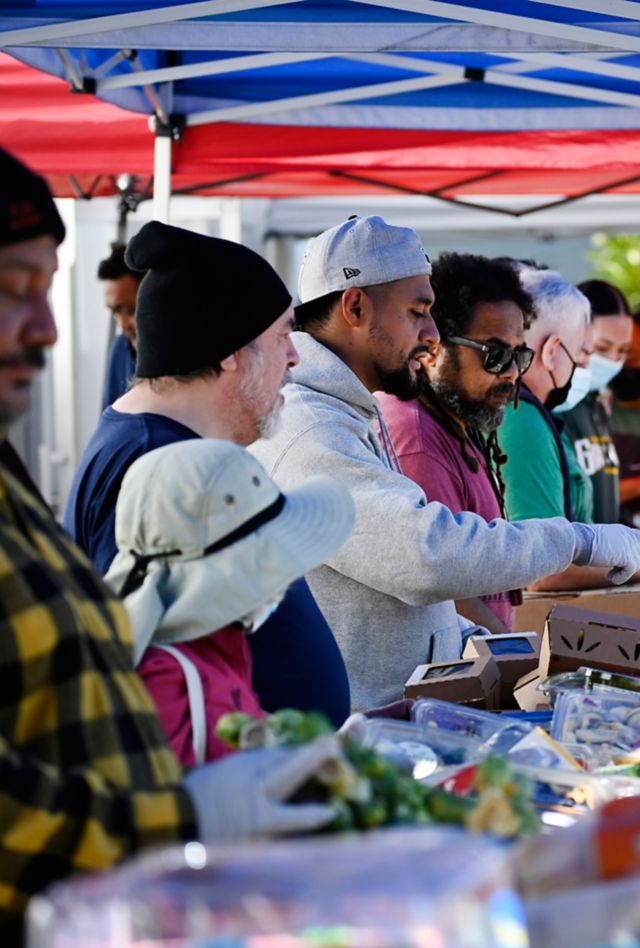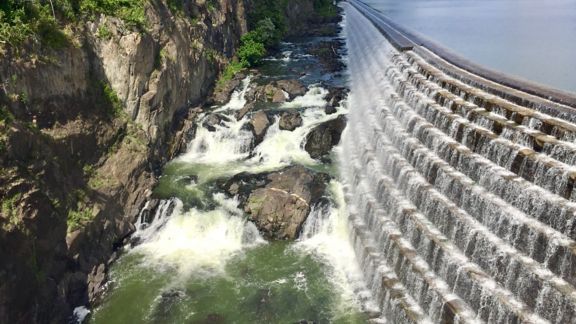NORC’s Data Innovation Helps California Build Disaster-Ready Communities

This article is from our NORC Now newsletter. Subscribe today.
May 2025
Using mapping and segmentation, NORC finds at-risk neighborhoods and creates strategies to foster the community ties essential for disaster recovery.
NORC at the University of Chicago is helping California build more resilient communities through a groundbreaking approach that brings data science to disaster preparedness. Working with California Volunteers and the Governor’s Office of Planning and Research, NORC developed sophisticated tools to identify the state’s most vulnerable neighborhoods and create tailored strategies to foster the community connections that help residents weather climate disasters.
“It’s a unique and amazing project because it brings together science, community aspects, volunteering, and communication strategies,” said Alyssa Ghirardelli, principal research scientist in NORC’s Health Care Programs department, who led the project. “It’s this really neat intersection of how we can use data to bring neighbors together, create community, and help them become more resilient against natural disasters and climate change events.”
NORC created a first-of-its-kind vulnerability index that combines environmental, social, and health factors to identify the communities at greatest risk.
The team developed a web-based Geographic Information Systems (GIS) mapping tool that merged diverse datasets, including the California Integrated Climate Adaptation Resiliency Program, insurance industry risk scores, extreme heat projections, internet access metrics, and Centers for Disease Control and Prevention social vulnerability indicators. This approach allowed researchers to precisely rank California ZIP codes and identify the 100 most at-risk areas for targeted interventions.
“We were able to use existing datasets out in the world that are unique to each other, but bringing them together helped us to see which neighborhoods are most at risk, and then to laser focus into those neighborhoods,” Ghirardelli explained. “The beauty of using ZIP codes is that when you have them, you can easily coordinate with marketing agencies and other partners to reach people effectively.”
NORC’s audience segmentation identified five distinct community types, each requiring different engagement approaches.
After surveying 1,098 residents in high-risk ZIP codes, NORC used K-means cluster analysis to group communities based on attitudes, beliefs, and behaviors. This revealed segments ranging from “Uninvested, but Wants Connections” to “Quiet, but Hard Workers,” each with different motivations and barriers to community engagement.
“Understanding these differences about people in their neighborhoods—their fears about risks, whether they fear their neighbors, whether there’s going to be crime—gives us insights into how to communicate with different types of people,” Ghirardelli said. “This approach is particularly valuable in multicultural California, where diverse communities require culturally responsive engagement strategies.”
Research showed clear challenges but also promising opportunities for community resilience.
While 29 percent of respondents rated their neighborhood connections as fair or poor and 21 percent often feel isolated, 80 percent expressed willingness to work with others to improve their neighborhood, indicating strong potential for engagement despite existing barriers.
In partnership with the communication firm Wondros, NORC delivered actionable insights that California Volunteers is using to implement targeted communication strategies. These strategies encourage neighborhood connections and volunteerism in high-risk areas through culturally tailored messaging and materials. “We worked with our valued communication partners, Wondros, to come up with this solution using the GIS data to help us pinpoint these neighborhoods,” Ghirardelli noted. This collaborative approach helps communities prepare for, respond to, and recover from climate disasters—from wildfires and flooding to extreme heat and drought.
“When neighbors talk to each other, are connected, and have community cohesion, they bounce back faster and have more resilience to get through changes that happen when natural disasters occur and during recovery,” Ghirardelli said. “This project demonstrates how sophisticated data analytics can identify vulnerable communities and develop the targeted strategies needed to build resilience from the ground up.”
This article is from our flagship newsletter, NORC Now. NORC Now keeps you informed of the full breadth of NORC’s work, the questions we help our clients answer, and the issues we help them address.








